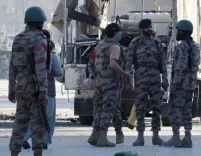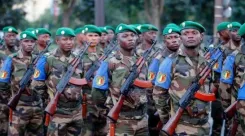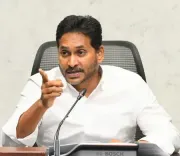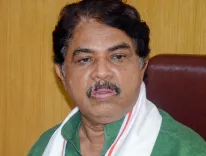Is the US Terror Designation of TRF Exposing Pakistan's Proxy Network?
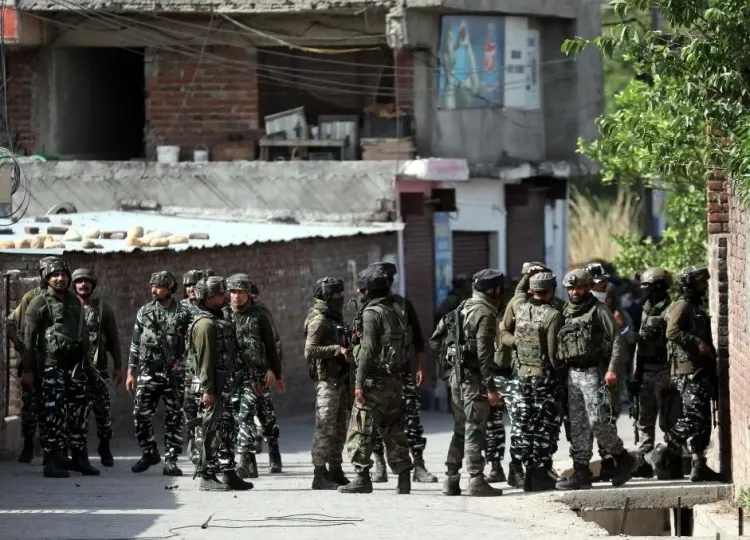
Synopsis
Key Takeaways
- US designates TRF as a terrorist organization.
- Designation confirms India's claims about TRF's links to LeT.
- Pahalgam attack underscores ongoing terrorism threats.
- India's diplomatic efforts have gained international acknowledgment.
- Future of TRF uncertain amid increased scrutiny.
Washington, July 19 (NationPress) In a significant blow to Pakistan's long-standing strategy of utilizing terror as a means to influence regional dynamics, the US State Department has officially classified The Resistance Front (TRF) as a Foreign Terrorist Organization (FTO) and a Specially Designated Global Terrorist (SDGT).
This designation substantiates India's assertions that TRF is not an independent militant entity, but rather a proxy for the Pakistan-based terrorist group Lashkar-e-Taiba (LeT), which was created to obscure Pakistan's ongoing support for terrorism in Jammu and Kashmir.
The US's action follows the horrific Pahalgam attack on April 22, 2025, where 26 Hindu pilgrims were brutally killed in a religiously motivated assault. This incident marked the deadliest attack on Indian civilians since the 2008 Mumbai attacks, which were also orchestrated by LeT, under the broader guidance of Pakistan’s Inter-Services Intelligence (ISI), as increasing evidence has confirmed.
When TRF took responsibility for the Pahalgam massacre, it starkly reminded the world of Islamabad’s unchanged approach to terror over the decades, a strategy that has seen it support groups in waging an asymmetric war in Kashmir.
India welcomed the US decision, describing it as “a timely and crucial step reflecting the deep partnership between India and the United States in counter-terrorism efforts.”
The Ministry of External Affairs reiterated that “India remains unwavering in its commitment to a zero tolerance policy toward terrorism and will continue to collaborate with global partners to ensure that terrorist entities and their proxies are held responsible.”
The Resistance Front is not an organic insurgent movement; it is rather a rebranded extension of LeT, initiated in 2019 as global scrutiny intensified on Pakistan's state-sponsored terror landscape. The Financial Action Task Force (FATF) had grey-listed Pakistan in 2018 due to its failure to curb financing for organizations like LeT and Jaish-e-Mohammad.
In response to international pressure, Pakistan sought to disguise its support for jihadist groups with a local guise. Thus, TRF emerged as the latest attempt to provide LeT’s radical Islamist violence with a territorial and “indigenous” makeover.
Similarly, Jaish-e-Mohammad (JeM) has also rebranded itself, creating its own proxy known as the People's Anti-Fascist Front (PAAF), which has participated in numerous terrorist acts across Jammu and Kashmir.
TRF’s language attempted to distance itself from the overtly Islamist rhetoric of LeT, instead presenting a veneer of Kashmiri nationalism. However, this branding exercise was merely superficial. Intelligence reports consistently indicate that TRF is supported logistically, operationally, and financially by LeT leaders operating freely in Pakistan, under the tacit protection of the Pakistani state.
From coordinated strikes against Indian security forces to targeted attacks on civilians, including the June 9, 2024, assault on a bus transporting Hindu pilgrims in Reasi district, TRF has systematically created a disturbing record of violence in the Union Territory of Jammu and Kashmir.
Every violent act has shown the unmistakable hallmark of LeT’s operational style, which is methodical, brutal, and designed to incite communal discord and unrest in the region.
The designation of TRF as a global terrorist organization comes at a time when Islamabad has been aggressively lobbying Washington for renewed military and financial ties. This is not a coincidence; it is the outcome of years of persistent Indian diplomacy, especially following the Pahalgam massacre.
In the immediate aftermath, India has launched a comprehensive campaign against terrorism emanating from Pakistan, incorporating both diplomatic and military strategies.
On the military front, Operation Sindoor commenced on May 6/7, targeting and dismantling terror launchpads and logistical hubs across the Line of Control (LoC) in Pakistan-Occupied Jammu and Kashmir (POJK) and mainland Pakistan through calculated cross-border strikes.
Simultaneously, India mobilized its diplomatic resources to expose the role of Pakistan’s deep state in nurturing and directing terror groups, not just in Kashmir but across the wider South Asian region.
As part of this effort, multiple delegations of Members of Parliament and diplomats visited 33 nations, providing irrefutable evidence of Islamabad’s culpability, including intercepted communications and intelligence dossiers that directly linked TRF attacks to handlers based in Pakistan.
This campaign specifically targeted members of the United Nations Security Council, both permanent and non-permanent, excluding China, which has emerged as a significant shield for Pakistan in global forums over the last decade. With this move from Washington, New Delhi has successfully reframed the dialogue on how Pakistan’s state-backed terrorist framework threatens regional and global stability.
Pakistan's strategy of using jihadist groups as “strategic assets” while maintaining a facade of plausible deniability is no longer sustainable. By operating through proxy organizations like TRF and PAAF, Islamabad aimed to evade global scrutiny while continuing its covert warfare in Kashmir. However, the US designation pierces through that veil of deception.
“The TRF is a front and proxy for Lashkar-e-Taiba,” Secretary Rubio stated unambiguously, removing any diplomatic vagueness. This action also coincides with the Pakistani military's attempts to reset relations with Washington, promoting its resources and positioning its strategic geography as a potential gateway for US engagement in Afghanistan and Central Asia, as well as containing Iran. Yet, the designation of TRF places Pakistan in a defensive position, reaffirming that no strategic interests can overshadow the necessity of combating terrorism.
The US's decision also has ramifications extending beyond South Asia. For years, New Delhi has struggled to convince many Global South nations, which view Pakistan as a co-victim of terrorism, of its neighbor's duplicitous stance.
The US designation of TRF, following meticulous efforts by Indian diplomats, should signal an end to this duplicity, as this decision reinforces New Delhi’s repeated claims that terrorism must be addressed uniformly, without selectivity.
The strong condemnation of the Pahalgam massacre by BRICS a few weeks ago, where even traditionally Pakistan-friendly nations refrained from defending it, marks a gradual but noticeable shift in sentiment.
India has long championed a “no distinction” policy regarding terrorism, a stance undermined by the geopolitical calculations of major powers. However, the TRF situation demonstrates that, with the right approach, factual realities can transcend narratives built on denial and evasion.
India's challenge now lies in maintaining this momentum. While the designation is a critical first step, dismantling the financial and logistical frameworks that support such groups is paramount. India has advocated for the enforcement of UN Security Council Resolution 1373, which mandates state accountability in curbing terrorism financing.
The hope is that the TRF’s designation will compel financial institutions, regional organizations, and multilateral platforms to take decisive action against those who harbor, finance, or condone such entities.
Thus, as India progresses toward its aim of internationalizing the effort against Pakistan’s proxy warfare, the TRF designation represents more than just a symbolic move. It should be viewed as a diplomatic and strategic triumph that not only reveals Pakistan’s duplicitous tactics but also indicates that the world is beginning to see through its “terror by proxy” strategy.



